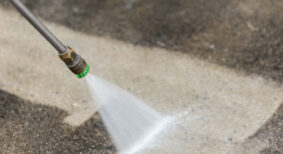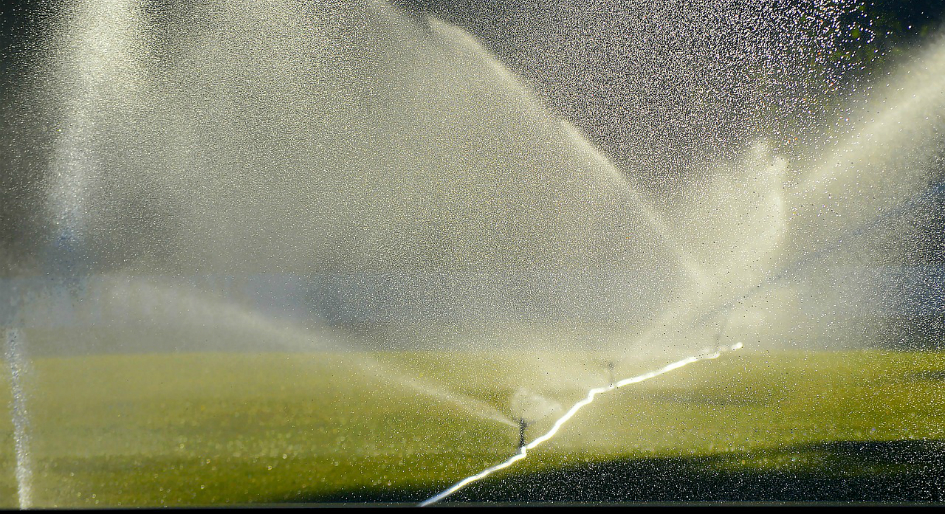Irrigation systems play an important role in a facility’s appearance by keeping landscapes looking their best. While the basic components of a commercial system are similar to those of a residential one, it usually has more zones in order to cover a larger area, additional sprinklers and operates at specific times of day when watering can take place. A commercial system is also more prone to vandalism due to its larger size and greater on-site foot traffic.
ON CLOSER INSPECTION
It’s important to regularly observe an irrigation system in operation and provide any necessary maintenance as soon as possible to ensure optimal performance and water efficiency. At commercial properties, the system should be inspected twice a month, with sufficient time given to each zone to ensure it’s in top working condition.
During the walk-through, note the system’s overall design and installation to determine whether it follows irrigation best practices. The system should provide head-to-head coverage (sprinklers properly spaced so that a spray or rotor’s throw radius ends where the next one begins); matched precipitation rates (all sprinklers on the same zone emit water at the same rate so that certain areas are not too wet while others are too dry); and hydrozoning (plants with similar water requirements are grouped together).
This walk-through should bring any maintenance issues to light, such as tilted or sunken sprinklers, which can greatly diminish the uniformity of a system’s coverage, or broken sprinklers or pipes.
The system’s operating water pressure should also be evaluated at this time. When too high, sprinklers emit water as mist or fog, which will likely drift away instead of landing on its coverage area. Conversely, when pressure is too low, sprinklers will not spray water the proper distance, resulting in dry areas and what’s commonly referred to as ‘green donuts’ (non-uniform areas of turf). The inspection should look at plant appearance and health, too, keeping in mind overwatered and underwatered plants can often exhibit the same symptoms.
For instance, wilting or yellowing is not a good indication of dehydration; plants that exhibit these signs are more likely to have received too much water.
Check the soil in the immediate area to determine whether there’s too much or too little moisture present before making any scheduling adjustments.
REPAIR AWARE
When properly maintained, an irrigation system can provide many years of excellent service. However, commercial systems often suffer from a lack of regular maintenance, causing major issues to go unnoticed for a long time. This leads to significant water waste and even site damage when parts of the landscape receive too much or too little water. This damage manifests itself as exceptionally dry areas, soaked areas or erosion.
If, during an inspection, a damaged nozzle or faulty sprinkler seal is discovered, it needs to be replaced. Sprinklers that are simply out of adjustment can be fixed fairly easily. When valves exhibit leaks or other problems, removing any debris that may be affecting their performance is the first course of action.
Many valve issues can be resolved simply by taking them apart and cleaning them. When a sprinkler head needs to be replaced, it’s important to ensure the new head emits the same amount of water as its predecessor. This includes proper nozzle sizing as well as product consistency by using the same model of spray or rotor.
If an entire zone could benefit from a spray or rotor upgrade for better coverage and efficiency, all sprinklers in the zone should be changed, not just one.
A WISE INVESTMENT
The timer, or controller, is the irrigation system’s brain. That’s why today’s ‘smart’ or weather-based controllers offer facilities the best solution when it comes to efficient irrigation scheduling. These newer models automatically adjust the irrigation schedule as weather and watering requirements change throughout the year. In fact, they can update schedules every day as needed, something most facility managers and their maintenance teams simply don’t have time to do. Without weather-based controllers, the best a facility manager can do is make monthly seasonal adjustments to the watering schedule, which is better than nothing.
Still, the more often a schedule is adjusted to meet that day’s unique needs, the more efficient the system will become. Many newer controller models can be managed from smartphones or tablets using mobile apps, making it easier than ever to adjust schedules and monitor weather conditions.
However, an irrigation system is only as efficient as its weakest component; having a sophisticated controller will not conserve water or improve system performance if sprays, rotors or drip systems aren’t working efficiently. Regularly inspecting the irrigation system and making any necessary fixes or upgrades is the best way to ensure as little water is being used as possible in the pursuit of a healthy, beautiful landscape.
Craig Otto is a technical trainer for the services division of Rain Bird Corp. He is also the owner of Minneapolis-based Irrigation Otto. Rain Bird is a leading global manufacturer and provider of irrigation products and services, including online training on irrigation basics.









I appreciate that you explained that an irrigation system should be regularly inspected to make sure it’s working as efficiently as possible. My father in law runs a farm and I’ve been wanting to help him as best as I can. Maybe I should ask if he’s inspected his watering systems lately.